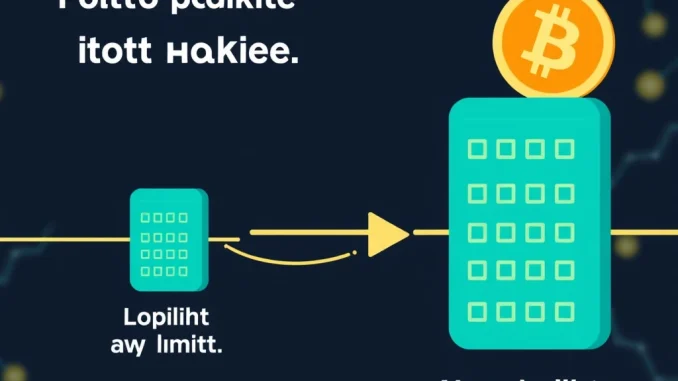
Exciting changes are on the horizon for the world’s leading cryptocurrency. The upcoming **Bitcoin Core 30** update is set to introduce a notable adjustment that could impact how data is stored on the blockchain. If you’re interested in the technical evolution of Bitcoin, this is a development you’ll want to follow closely.
What is Happening with the **Bitcoin Data Limit**?
Bitcoin Core version 30, currently planned for release in October, includes a significant change regarding the amount of non-financial data that can be included in transactions. Historically, non-financial data storage was largely limited by the **OP_RETURN** opcode, which capped it at a mere 80 bytes.
The new proposal within **Bitcoin Core 30** aims to dramatically increase this default limit to nearly 4 megabytes (MB). This represents a massive leap from the previous 80-byte restriction, potentially opening up new possibilities for using the Bitcoin blockchain beyond simple value transfers.
It’s important to note that while the *default* limit is being raised, node operators will retain the ability to manually adjust this setting based on their own preferences and resource availability.
Why Raise the **OP_RETURN** Cap?
The primary motivation behind this change, according to reports, is to support broader use cases for the Bitcoin network. Proponents believe that by allowing more **Bitcoin transaction data** to be embedded, developers can innovate and build new applications or protocols that leverage Bitcoin’s security and immutability in novel ways. This could potentially include various forms of data anchoring, timestamping, or other non-monetary applications that require storing small amounts of information on the blockchain.
Concerns Around the **Bitcoin Update**
However, not everyone in the Bitcoin development community is enthusiastic about this change. Some prominent developers, including long-time contributor Luke Dashjr and others like BitcoinMechanic, have voiced significant concerns.
Their worries center on a few key points:
- **Increased Network Strain:** Allowing larger amounts of data could lead to bigger transaction sizes, potentially increasing the storage, bandwidth, and processing requirements for running a full Bitcoin node. This could make it more expensive or resource-intensive for individuals to operate nodes, potentially leading to increased centralization.
- **Shift in Focus:** Critics argue that expanding the capacity for non-financial data moves Bitcoin away from its original design as a peer-to-peer electronic cash system. They believe the blockchain should primarily be reserved for monetary transactions and that allowing large amounts of arbitrary data could clutter the ledger and detract from its core purpose.
- **Potential for Abuse:** There are concerns that a higher limit could be exploited to embed large, potentially undesirable, amounts of data, further straining network resources and potentially increasing censorship vectors.
These concerns highlight an ongoing debate within the community about the future direction and acceptable uses of the Bitcoin blockchain.
What Does This Mean for You?
For most Bitcoin users simply sending and receiving transactions, the immediate impact of this **Bitcoin update** might be minimal. However, for developers looking to build applications on Bitcoin or for node operators concerned about resource usage, this change is highly relevant. Node operators will have the flexibility to configure their nodes to accept or reject transactions based on data size, allowing them to manage their own resources and adherence to network norms.
Summary
The upcoming **Bitcoin Core 30** release is set to significantly increase the default limit for non-financial data embedded in transactions, moving from the restrictive 80-byte **OP_RETURN** cap to nearly 4MB. This change is intended to foster broader use cases for the network by allowing more **Bitcoin transaction data**. However, it has also sparked debate and concern among some developers who worry about potential network strain and a deviation from Bitcoin’s original focus. As the October release approaches, the community will be watching closely to see how this significant **Bitcoin update** is received and implemented across the network.



